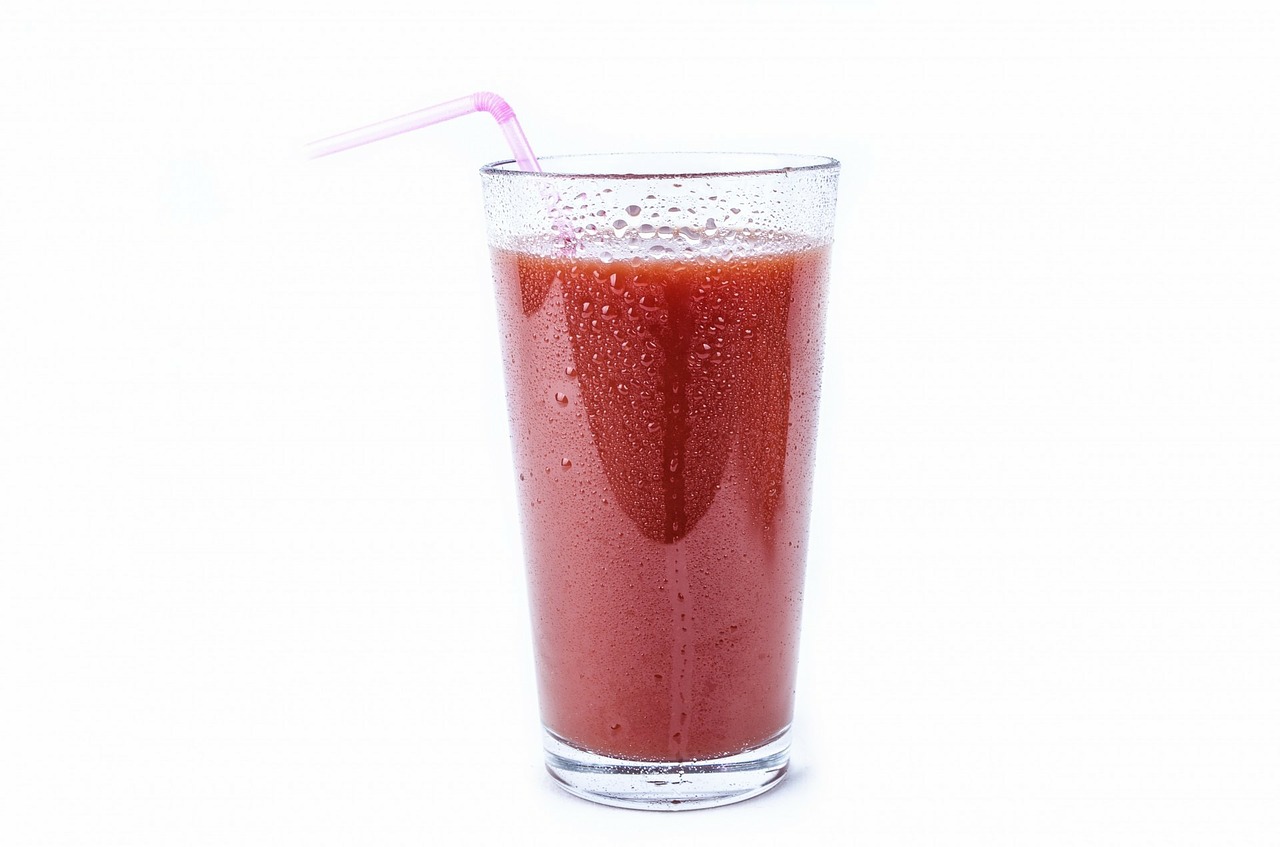Compared to some others, this is a fairly simplistic Difference Between: tomato juice and V8.
Primarily, we’re going to be looking at the specific nutritional differences between the two, not unlike the Difference Between post with whole milk and skim milk.
Personally, I much prefer tomato juice to V8, ideally in a bloody Mary.
Actually, I haven’t been much of a fan of either tomato juice or V8, simply because I would rather eat my vegetables than drink them. I also don’t understand having a veggie sub when you could just order a salad, but I digress.
Clearly, V8 juice has more vegetables in it than tomato juice. However, when looking into the two beverages more closely, we can see that that tomato juice does come ahead in certain nutritional aspects.
When looking at nutrition labels and ingredient lists, I concentrated on Campbell’s tomato juice specifically. Come to find out, Campbell’s owns V8.
For V8, I honed in on their original, classic version, not the later varieties with spiciness, fruit, etc.
First, the ingredients in tomato juice and V8.
- Tomato juice: reconstituted tomato juice (water and concentrated juice of tomatoes), salt, Vitamin C (ascorbic acid)
- V8: reconstituted vegetable juice blend (water and concentrated juices of tomatoes, carrots, celery, beets, parsley, lettuce, watercress, spinach), contains less than 2% of salt, Vitamin C (ascorbic acid), natural flavoring citric acid
We can see how the “8” in V8 refers to the number of vegetables included.
Moving along, there is the more specific nutrient breakdown to consider.
Tomato juice, per serving:
- Has 570 grams of potassium; V8 has 470.
- Has 3 grams of dietary fiber; V8 has 2.
- Has 3 grams of protein; V8 has 2.
- Has 180% of Vitamin C; V8 has 120%.
- Has 6% of iron; V8 has 4%.
- Has 10% of magnesium; V8 has none listed.
- Has 2% of zinc; V8 has none listed.
V8, per serving:
- Has 50 calories; tomato juice has 70.
- Has 650 milligrams of sodium; tomato juice has 970.
- Has 10 grams of carbohydrates; tomato juice has 14.
- Has 7 grams of sugar; tomato juice has 9.
- Has 40% of Vitamin A; tomato juice has 30%.
Both tomato juice and V8:
- Have no fat calories.
- Have 4% of calcium per serving.
- Are kosher.
- Are low-fat.
- Are gluten-free.
V8 has fewer calories, less sodium, and less sugar – those are pretty solid advantages.
However, tomato juice is certainly holding its own, with a higher amount of potassium, fiber, protein, Vitamin C, and iron, to name a few.
While I admire the notion of “drinking your vegetables” as a way to encourage a healthy, nutrient-rich diet, I would still prefer eating mine the old fashioned way.
A possible Difference Between for the future: the difference between bloody Marys made with tomato juice, and bloody Marys made with vegetable juice.
I’d have to do a taste test, clearly.

Comments
9 responses to “Difference between: tomato juice and V8”
The numbers for tomato juice are way off v8 has almost 1000 milligrams sodium.
Sources I found, such as LiveStrong.com, indicate the sodium per serving is 650 milligrams. Where did you see the 1000 milligrams? Are you considering a serving to be 8 ounces?
For Blah:
The Large can (or regular soda can) of V8 has 920mg which is 11.5 Fl oz.
This is where the mix up was 🙂
8oz small can = 650mg
11.5oz can = 920mg
Aha! Thanks for clarifying, Kyle!
What are the serving sizes for each in ounces? Are we talking 8 oz tomato juice vs 5.5 oz (the little can) of V8? I think if it was the same amount of fluid it would be a more even comparison. Please let me know when you do that.
Eight ounce serving for both.
there is something bad in just about everything we eat , i just enjoy an ice cold 12oz glass of V8 with my breakfast.
I’m trying to find out if V8 juice has less acid and better for your gallbladder then Taylor juice.
How many tomatoes in an 8 oz glass of tomato juice, and do they make a LITE sodium version???